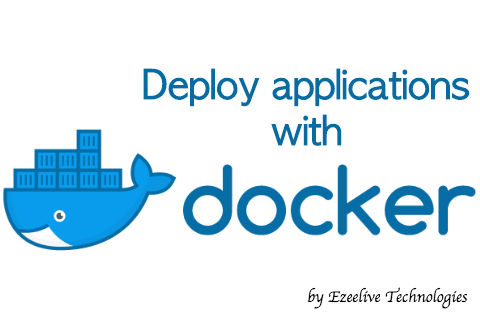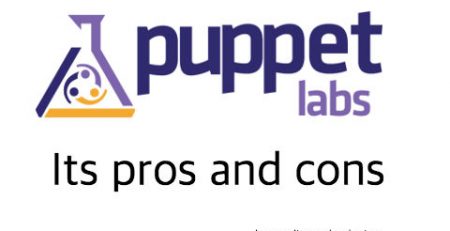Deploy Applications Docker – Best Practices in 2025
Docker is one the biggest hypes in the world of cloud computing and virtualization today. The Docker project today has more than 500 contributors in a limited time.
There is also an impressive number of downloads of it and a lot of events (like DockerCon) that promote and discuss the ways to use Docker.
What is Docker
Docker is a container software. As with many other things with software, container here means something entirely different than in say, a more programming context.
Container here is mentioned more in the application deployment context. Docker is a tool that helps programmers package their software with all its components, dependencies, and libraries and then ship it as one unit.
The main advantage here is that the exact environment which causes a developed application to run smoothly (with various system resources, accesses etc.) can be reproduced effectively using Docker. It is an open-source tool and widely used to deploy applications to the cloud and also to on-premises data centres.
Docker’s container mechanism has even been compared to that of virtualization. While it is not really a case of virtualization, the features are powerful enough to be compared to it. We will also see what makes Docker different from other virtualization solutions.
Why Docker
Developers are generally good at solving a business problem and creating a solution for it. Once their solution is ready, they are quickly embroiled in a different range of problems.
These are worrying about their processes running in the current conditions, their applications getting the right disk access, their applications running with the right permissions as well.
While it was easier to do this in the past, as application complexity and the variety of IT infrastructure grew, it became tougher to keep worrying about the underlying system and impair development in return.
It also became more challenging to keep with the latest trends in deployment and environment management. An effective container solution like Docker makes it easy for the developer to package everything and even capture the exact test environment that the application would optimally function in.
This allows for the application to run as intended without any unexpected behaviour due to the underlying system.
Advantages of deploying applications with docker container
It allows developers to develop without worrying about the system that will be running the applications.
Developers are freed up from thinking about the gritty details of system commands, disk access protocols, and write-access permissions. Docker encapsulates and their applications required dependencies and make the run as intended.
1. Docker reduces the number of systems and operations overhead:
Docker reduces the need for a complete virtualized solution to one which uses only the resources that are needed. This reduces the volume of resources needed.
2. Docker gives applications a performance boost:
Docker takes care of the resources that the application would need and not let the application depend on the availability of system resources. This helps the applications to run faster and becomes a performance boost for them.
3. Docker containers are immutable:
Once the Docker container is ready with the code, configurations and the folder structure, the container itself is unchangeable. This ensures that the container proceeds to the final production environment without any problems.
4. Docker containers are fast:
Docker containers can be started in a matter of seconds compared to virtualized resources that take significantly more time.
5. Avoid Malicious Activity:
While Docker is no sandboxing software, it does impose certainly reasonable restraints on the executing software. That helps Docker containers be more secure in their execution and also add to the credibility.
6. Docker is open source:
The Docker project is open source and very popular on GitHub where it has already got more than 2000 forks. The contributors to it keep making it a more powerful platform to contend with every day.
While there are so many advantages of using Docker, there are also a few things to be kept in mind while deploying your applications with Docker.
Possible cons of Docker Deployment
1. Single layered images are not recommended:
Docker experts always denounce the approach of having single-layered images for execution, saying that it imposes restrictions on the software and isn’t a good practice.
2. Docker is not inherently secure:
It appears very secure and some even believe that it helps any application run anywhere. It is a very loose interpretation of Docker’s capabilities. it doesn’t automatically secure the underlying system.
3. Docker images cannot get big
Docker images are not recommended to be large in size. For any deployment, the size restrictions in standard practice are established to prevent applications from getting too bulky.
How is Docker not a tool for virtualization
It is frequently stated or understood that Docker containers work on the principle of virtualization. Since the application deployed using Docker work inside the host machine, as if they were running in the original environment, it is thought of as a virtualized entity. That is really not the case with Docker.
With Docker deployment, the pieces that are needed to run a particular piece of software are carefully orchestrated so that they run together harmoniously and don’t hamper the application in any way.
It is like a small window to the entire set of the operating system capabilities. It is not the actual operating system in any way, remotely.
This, in fact, is one of the reasons why Docker containers are fast and very lightweight. This is also one of its major advantages.
Docker is a great way to implement micro-service architectures as well. Since components of an application can be run by Docker taking care of all the dependencies, it is possible to develop those components independently of each other, in complete isolation.
This helps the development of micromodules in an application that is tested independently and which also run without needing any dependencies.
Docker is indeed the tool that the cloud computing community has been looking for a long time now. That explains its massive popularity and immense growth. By keeping in mind the caveats, it is possible to deploy applications with Docker containers, successfully.
Some Important Links:
| Topics | Link URL |
|---|---|
| Documentation | https://docs.docker.com/ |
| Technical Support | https://success.docker.com/support |
| Docker Certification | https://success.docker.com/certification |
| Docker Community Edition | https://www.docker.com/community-edition |
| Docker Enterprise Edition | https://www.docker.com/enterprise-edition |
LAMP stack built with Docker Compose in Amazon EC2
Clone this repository on your local computer. Run the docker-compose up -d
git clone https://github.com/ezeelive/docker-aws-lamp-compose.git cd docker-aws-lamp-compose/ docker-aws-compose up -d
Git Repository URL: https://github.com/ezeelive/docker-aws-lamp-compose
Install Docker on Windows (Docker Toolbox)
- Download Docker Toolbox for Windows 64-bit operating system running Windows 7 or higher.
- Right click and click on ‘Run as Administrator’ mode.


- Install in available drive, I am installing in Default C:\Program Files\Docker Toolbox

- Verify successful installation use ‘docker -v’ command in command prompt.
$ docker -v Docker version 18.01.0-ce, build 03596f51b1 // Result - showing current installation docker version





Leave a Reply